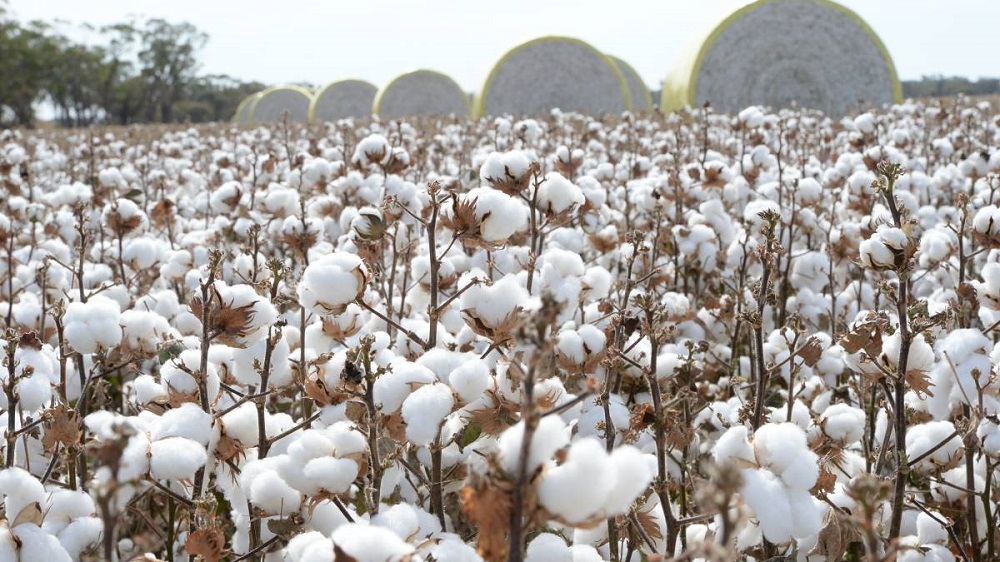The Federal Committee on Agriculture was briefed in October that cotton production for the year 2022-23 was estimated to suffer a historic slump of 43% compared to the past year. The primary reason for this year’s situation is the devastating monsoon floods that damaged major cotton-growing regions of Sindh and Balochistan, but cotton production has been waning for almost a decade now, raising questions over government policies and programs.
The Economic Survey of Pakistan 2021-22 showed that Pakistan is the 5th largest cotton producer globally, but a recent article showed the country is estimated to import at least 5 million bales in the ongoing fiscal year to meet the shortfall in demand by the textile sector. Attributing this year’s loss to floods would’ve been reasonable if this year’s situation was an exception. Data from the Pakistan Bureau of Statistics shows that the crop’s production likely plunged 48% from 2011-12 to 2020-21.
There is a long account of inabilities, inefficiencies, and incompetence behind the doom looming over the agriculture sector for years, but setting priorities would rank at the top when discussing the downfall of cotton. Every government, one after the other, has championed the farmer’s rights but farmers have continued to grapple with severe droughts and catastrophes like floods. This year, cotton suffered drought in sowing in April and floods in August-September when it was almost ready. Every administration claimed it would revive the cotton segment, but sugar mills kept popping up or shifting from other areas to Southern Punjab.
At the moment there are six sugar mills located in one district of Rahim Yar Khan alone, which used to be the home of cotton. The unchecked rise of sugarcane rode alongside the decline of cotton. Even mango orchards shifted to sugarcane. There is no doubt that sugarcane proved a better alternative for farmers tired of failing to protect cotton from Pink Boll worm and other constraints, but the reward couldn’t outweigh the cost borne by the country in terms of losing textile exports.
We populated our fields with biotechnology cotton, originally developed for temperate environments with lower pest infestations and never intended for subtropical climates like in Pakistan and India. The Center of Excellence in Molecular Biology (CEMB) at Punjab University has successfully developed transgenic cotton resistant to pests & herbicides, but professional jealousy among federal and provincial research institutes is keeping innovations from masses.
“Cotton has never been among the top priorities of any government,” Rai Danish Raza from Kisaan Seed Trial System (KSTS) told ProPakistani. “Bacterial treated cotton doesn’t grow well at temperatures above 40 degrees, which are usually our average in summers. Secondly, we still have not developed a cultural or chemical control for Pink Boll worm (leading pest of cotton) and other sucking insects.”
He explained that given the year-long crop cultivation with no crop planning, insects stay in the field for the whole year. He also admired the efforts of Punjab University’s Dr. Idrees Ahmad Nasir in pioneering transgenic cotton in Pakistan but criticized the lack of efforts by federal and provincial institutions in promoting transgenic varieties that could prove to be key in battling pests, weeds, and climate.
Cotton’s primary consumer is the textile sector, whose demand has been constantly met by imports. The Pakistan Textile Exporters Association has demanded to lift the ban on Indian cotton imports, which would have been cheaper compared to the American cotton. There is an argument to be made here in support of Indian imports, implying that the land and other natural resources could be put into use of better high-value crops, but this will put the last nail in the coffin of indigenous cotton production. This kind of aggressive transformation in crop priorities would leave the vast majority of farmers broke and could render high-value crops useless in some cases by saturating the supply end with no progress in developing exports. One thing is for sure, something needs to be done decisively to right the ship.
There is need to take strong ownership of innovations made in certain research institutions. All agri-institutions should immediately accept and promote the transgenic cotton, keeping any differences aside. Either we should be importing cotton and move on, or be ready to dedicate all resources toward enhancing our domestic yield. Cotton cultivation has to be incentivized at the grass-root level to ensure the price stability even in the face of much-needed imports, and this is one of those policies which has to be made and ratified for the next decade regardless of who comes into power.


























There were no harm to production when all governments allowing agricultural land to become real estate pimps monopoly. Now suddenly they wake up.